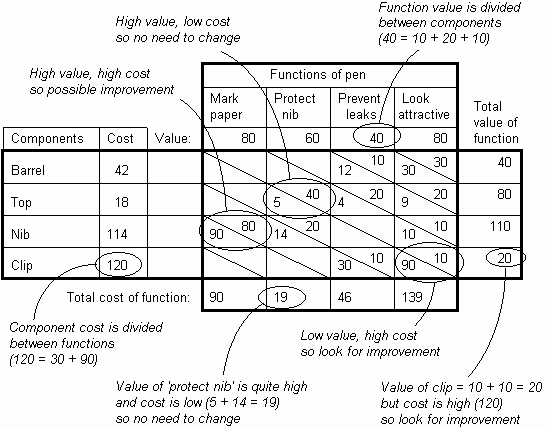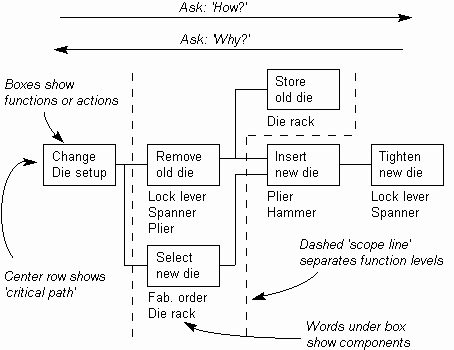Value Analysis: Practical variations
The Quality Toolbook >
Value Analysis > Practical variations
When to use it | How to understand it |
Example | How to do it | Practical
variations
<-- Previous |
Next
-->
Practical variations
- Abbreviate the method for analyzing simple situations by using the steps of Blast, Create, Refine. 'Blast' means rapidly cutting through existing concepts to expose the bare bones of the problem. In the 'Create' step, alternative solutions are devised. The 'Refine' step is then used to select the best alternative and make it work in practice. This mental model of destruction and thoughtful reconstruction is also useful when doing a more complex analysis.
- Instead of breaking down the item being analyzed, then mapping the components to functions, directly identify components that satisfy identified functions. This is faster, but reduces the chance of spotting redundant components and unsatisfied functions.
- Zenbara
means 'completely dismantle' and is an approach to understanding an item and inspiring new ideas by slowly and carefully taking it to pieces, discussing the function and design of each piece in turn. - Use a
Matrix Diagram to map complex relationships between functions and components. This can also be used to apportion and evaluate costs and values, as
below. This may be eased by first converting costs and values to percentages.

Fig. 1. Using a Matrix Diagram to map complex relationships
- Activity Based Costing
, or ABC, is an approach to allocating expenses within a workplace, based on actual use of resources. This may be compared with the more normal approach of lumping together all unknown costs into an 'overhead' and allocating a proportion to each department. ABC is thus a form of Value Analysis, taken from the financial viewpoint, and the two tools can be used effectively together. - In Function Analysis System Technique (or FAST), functions are written on 3" x 5" cards and arranged in order so that cards to the left answer the question 'Why?' and cards to the right answer the question 'How?'. Separate horizontal chains of cards are then arranged so that functions in different chains that occur at the same time appear above one another, as
below .

Fig. 2. FAST
<-- Previous |
Next
-->
|